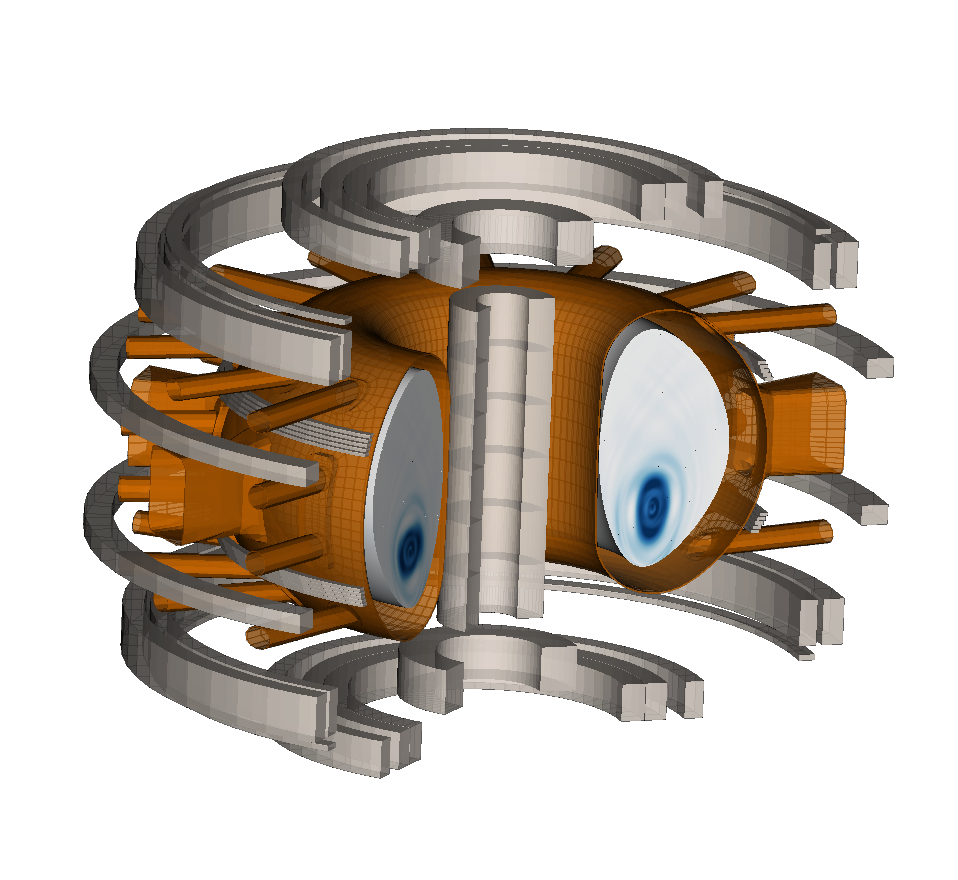Introduction to Plasma Instabilities
Imagine harnessing the power of the stars to generate electricity. This is the promise of fusion energy, where light atomic nuclei combine to form heavier ones, releasing vast amounts of energy in the process. However, achieving and maintaining the conditions for this reaction on Earth requires containing ultra-hot plasma within a magnetic field in the vacuum vessel of a machine known as a tokamak. One of the significant challenges in this endeavour is managing plasma instabilities, such as edge localized modes (ELMs) and disruptions, which can damage the reactor’s components and interrupt the fusion process.
The JOREK Code Explained
Enter JOREK, a cutting-edge computational tool developed by an international team of researchers. JOREK stands at the forefront of efforts to simulate non-linear magneto-hydrodynamic (MHD) events in tokamaks, providing invaluable insights into the behaviour of plasma under extreme conditions. By accurately modelling the complex interactions between plasma and magnetic fields, JOREK helps scientists understand how to control or mitigate instabilities that threaten the stability and efficiency of fusion reactors.

Highlighting Key Advancements
Recent advances with the JOREK code have been instrumental in making significant strides in fusion research. For instance, JOREK has contributed to the experimental validation of models for unmitigated vertical displacement events (VDEs), a type of disruption that occurs when plasma moves vertically and impacts the reactor’s walls. Understanding these events is crucial for developing effective mitigation strategies.
Moreover, JOREK has identified mechanisms for electromagnetic force mitigation by massive impurity injection, a technique that involves injecting materials like neon or argon into the plasma to quench disruptions before they can cause damage. This research is critical for designing disruption mitigation systems for ITER, the world’s largest tokamak currently under construction in France, which aims to demonstrate the feasibility of fusion power.
Why JOREK Matters
The journey toward achieving sustainable fusion energy is fraught with scientific and engineering challenges. JOREK’s contributions to understanding and controlling plasma instabilities represent a significant leap forward in this journey. By providing a deeper understanding of plasma behaviour, JOREK not only enhances the safety and efficiency of future fusion power plants but also brings us closer to realizing fusion energy as a limitless, clean power source for generations to come.
In conclusion, the JOREK code is more than just a computational tool; it is a key that unlocks the mysteries of plasma dynamics, enabling progress in one of the most ambitious scientific endeavours of our time. As fusion research advances, JOREK will undoubtedly continue to play a vital role in turning the dream of fusion energy into reality.
EUROfusion Involvement
EUROfusion has continuously supported the development of the JOREK code over many years, in particular via past Enabling Research Projects and the present theory and simulation project on “MHD Transients”. “This continuous support was a key for turning the initially small effort into a world-wide activity that makes a true difference for fusion research.” says Matthias Hoelzl, the principal investigator of the project. Guido Huijsmans, the original author of the JOREK code and one of the main developers also adds “It is great to see how many young and talented new people the community has attracted over the last years.”
More about JOREK:
Website: The JOREK non-linear MHD Code
Article: Record turnout spotlights crucial role of JOREK code
Paper: The JOREK non-linear extended MHD code and applications to large-scale instabilities and their control in magnetically confined fusion plasmas
